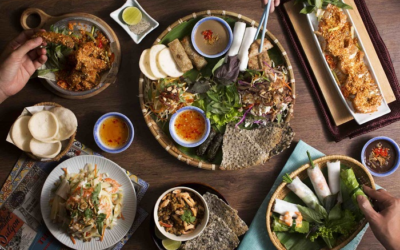Travel Hoi An will be less than perfect if you have not admired the Japanese Covered Bridge. Existing for hundreds of years, Hoi An Covered Bridge is not only a famous tourist destination. But the Covered Bridge also plays an essential role in the spiritual life of local people.
Hoi An ancient town, is like a rustic oil painting nestled next to the peaceful Hoai River. Walking along Hoi An, you will encounter many monuments and landscapes that captivate people, especially the Covered Bridge, which crystallizes the soul of Hoi An land.
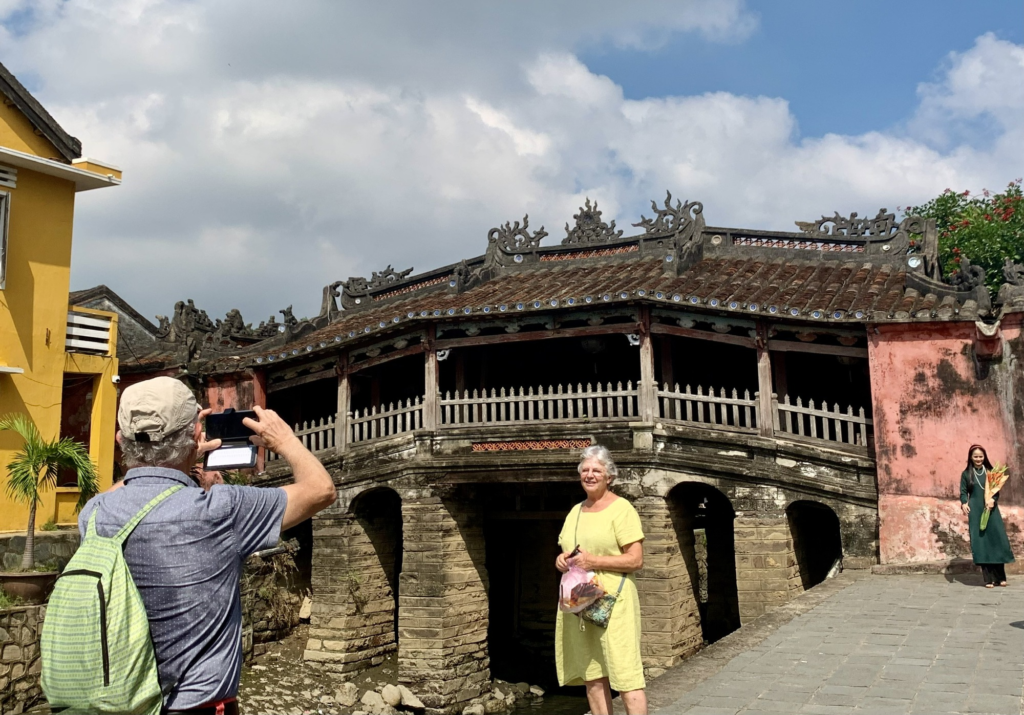
The Covered Bridge is such a beautiful symbol of the golden age of Hoi An, when there was solid cultural exchange and trade between Vietnam and Japan during the Nguyen Dynasty. After four centuries, despite time and historical fluctuations, Covered Bridge still exists in silence. It attract tourists to admire the architecture and romantic beauty of this place.
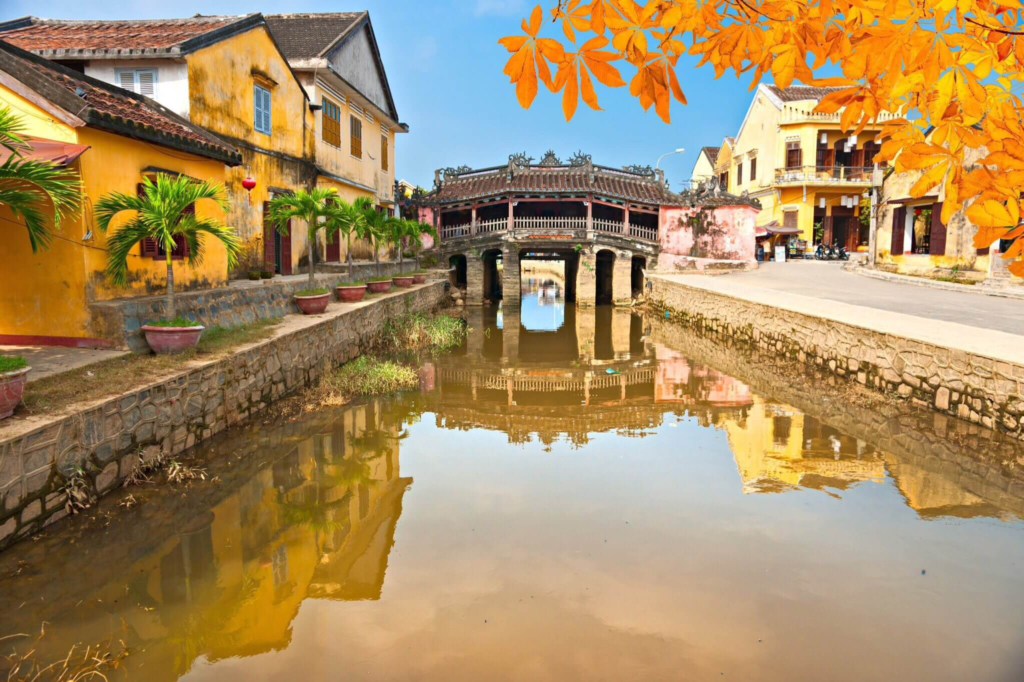
Today, yourvietnam.org will take you to discover unique things about Covered Bridge. So that when you have the opportunity to travel Hoi An, you will feel the value of ancient architectural work and its significance to the Vietnamese people.
Travel Hoi An – Introducing Hoi An Covered Bridge
The Japanese built the Covered Bridge 400 years ago. Although it is only an 18 m-long wooden bridge bending over a canal flowing into the Hoai River, with its unique architecture that resembles a pagoda, Covered Bridge has become a unique construction, a Phu Tang cultural heritage, only in Vietnam.
Somebody called Covered Bridge Lai Kieu Vien, or Japanese Bridge, which means a temple-style bridge. In the past, besides the function of regulating traffic, Chua Cau was also a place for generations of religious activities of the people of the old town and a rendezvous for arbitration of trade disputes in Hoi An trading port. Today, the Covered Bridge has become a symbol of the old town, contributing to making Hoi An worthy of a World Cultural Heritage.
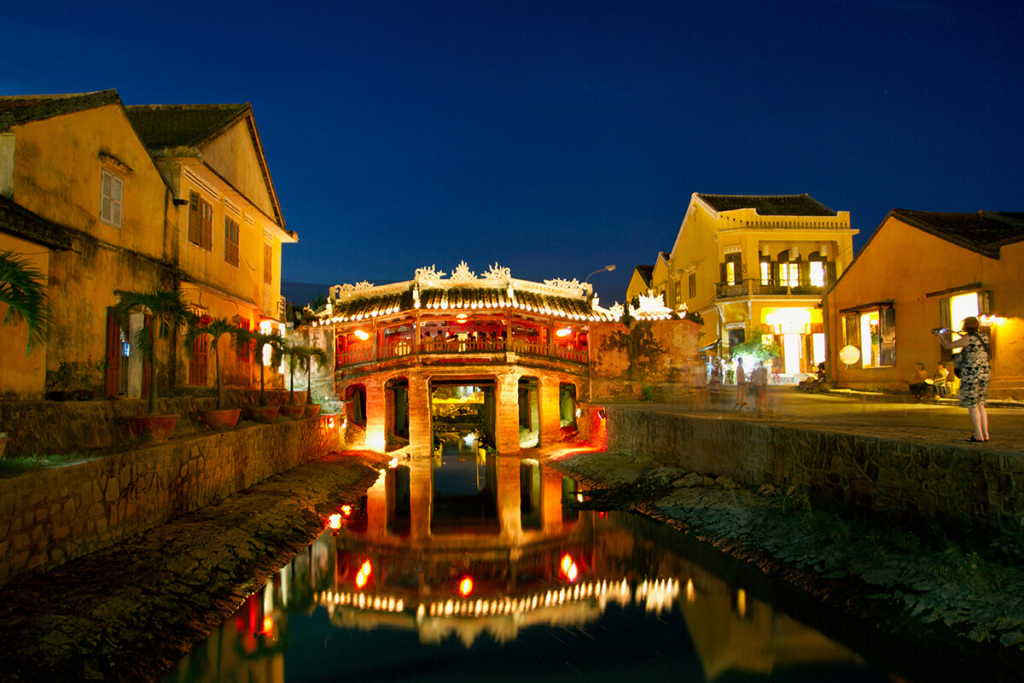
Covered Bridge was recognized as a National Historical-Cultural Monument in 1990. And the image of the Covered Bridge appears on Vietnam’s current 20,000 VND polymer banknote.
At night, the Cau Pagoda project becomes even more sparkling and magical, lighting up the entire river. Travel Hoi An, #teamyourvietnam.org remember to capture beautiful moments at Chua Cau.
Hoi An Bridge Pagoda Address
The Covered Bridge is located right at the gateway leading to the center of the old town, connecting Nguyen Thi Minh Khai Street and Tran Phu Street, Hoi An City, Quang Nam Province.
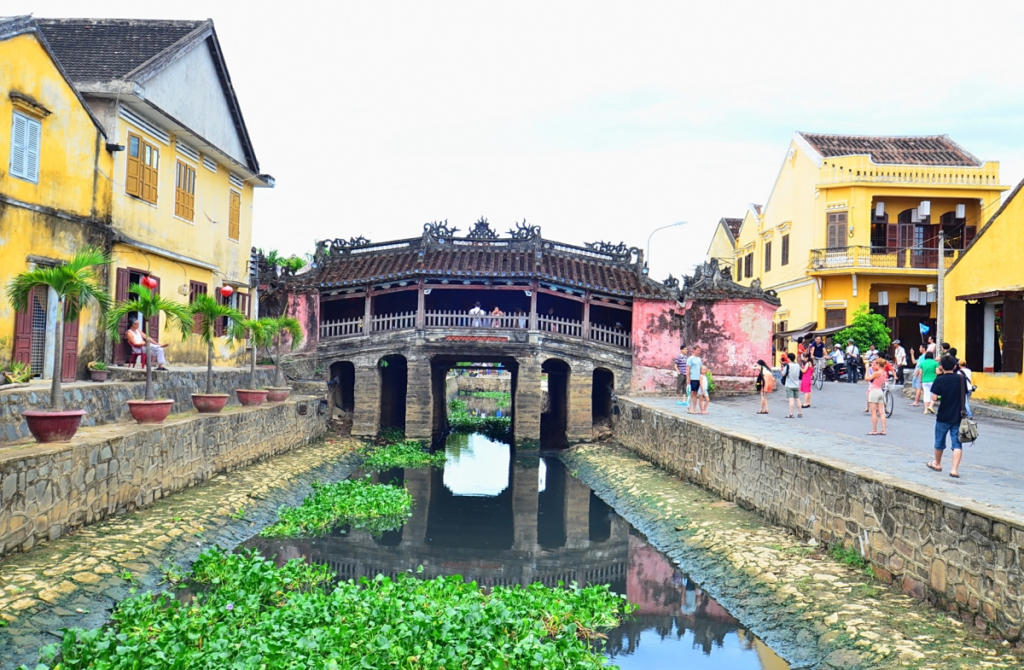
==> Read more about the history of Hoi An ancient town
Instructions on How to Get to Hoi An Covered Bridge
Covered Bridge is in Hoi An ancient town. So to visit this tourist attraction, you can only move to the old town center area, park your car outside, and walk inside. Hoi An, an ancient town, is about 30km south of Da Nang city. So, from Da Nang, you can travel Hoi An by personal or public transportation.
Opening Hours of Hoi An Bridge Pagoda
Covered Bridge is in the walking street area, so it will be open for visiting for two hours:
- Morning: 9:00 a.m. – 11:00 a.m
- Afternoon: 15:00 – 22:00
In addition, the tour ticket price will be 80,000 VND/person. With this ticket, you have the option to visit 4 of 21 places for a fee.
Which God Does Hoi An Bridge Pagoda Worship?
It’s called a pagoda, but in fact, it doesn’t worship Buddha but worships the guardian god Bac De Tran Vu. He is a great god of Taoism, adored by people for protecting them from disasters, floods, and protecting the country. They put their faith in the guardian angel, praying for a luckier, safer, and more prosperous life.
In addition, at both ends of the Bridge, there is a solemn worship of a pair of mascots and a tengu, a pair of mascots that guard and protect the Covered Bridge. Nowadays, on full moon days or holidays, Tet, Hoi An people often come before the statue of Bac De Tran Vu to make offerings and pray for protection and blessings.
Legend of Hoi An Covered Bridge
In Japanese legend, there is a sea monster named Mamazu (Cu), with its head located in Japan, its tail located in India, and its back located across Hoi An. This monster often causes earthquakes, tsunamis, storms, and floods in the seas where it dominates. Therefore, to control Mamazu, the Japanese built a bridge shaped like a sword piercing the beast’s back, silencing it so it could not struggle and cause harm.
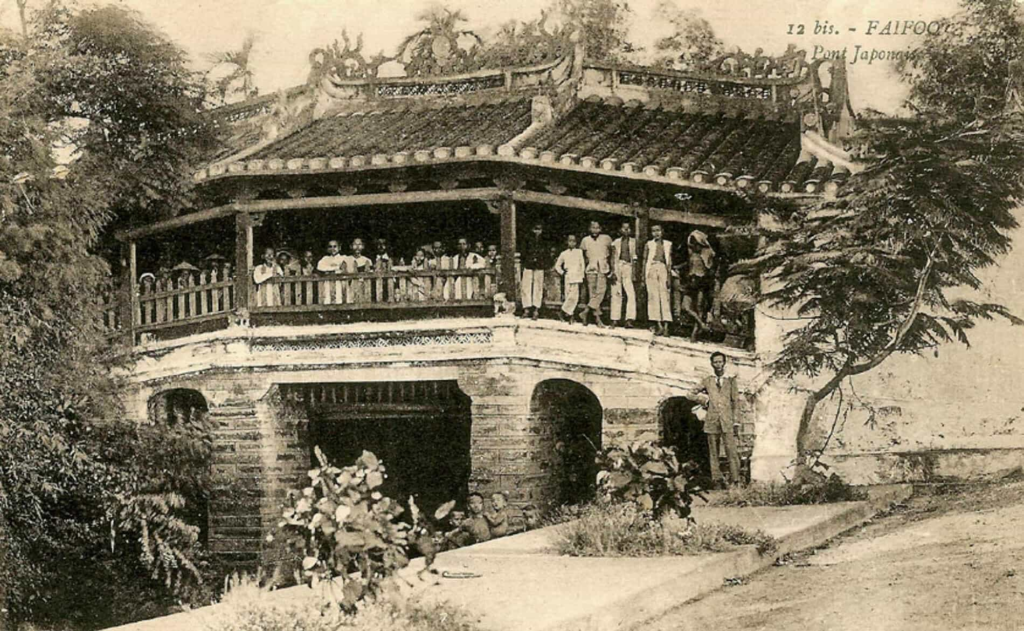
Geologically, Hoi An ancient town was built from the Thu Bon River. It is a large river in the Central region, which frequently floods, causing the livelihoods of Hoi An residents and Japanese merchants in years to come and facing many difficulties in the past. The appearance of the Covered Bridge serves as a tremendous spiritual fulcrum. It helped them overcome harsh natural conditions to build a life in a new land.
Travel Hoi An – History of Covered Bridge
In the 16th-17th centuries, when the Nguyen Dynasty began to reform, open trade, and develop industry and trade. Hoi An was chosen as a port town – a place to meet and exchange goods with merchants. Foreign. At that time, Hoi An became much more bustling and bustling and quickly became one of the largest ports in Southeast Asia at that time.

When Japanese merchants came to Hoi An to live, they donated money to build a bridge across the canal to facilitate travel. Therefore, everyone call the Bridge the Japanese Bridge.
In 1653, they built an additional pagoda on the northern side of the Bridge, protruding from the middle of the Bridge, making the construction site T-shaped. From then on, the Bridge was renamed Chua Cau.
In 1719, Lord Nguyen Phuc Chu visited Hoi An, and called the Bridge Lai Vien Kieu, meaning “bridge to welcome guests from afar”, as a way to remember that he had visited here. Today, this name is still embossed on the large board in front of the temple door.
According to the date recorded on the roof beams and the stele at the beginning of the Bridge, somebody rebuilt the Bridge around 1817 under the Nguyen Dynasty. Since then, the Covered Bridge has also undergone many significant restorations in the years. : 1865, 1915, 1986.

Unfortunately, after many repairs, many original Japanese architectural features have gradually disappeared, replaced by Vietnamese and Chinese styles as people see today. In February 1990, the Covered Bridge was recognized as a National Historical-Cultural Monument.
Hoi An Bridge Pagoda Architecture
Although initially an architectural work with a strong Japanese style, after many restorations, the Covered Bridge now has many features of a Vietnamese and Chinese temple.
Covered Bridge has a total length of about 18m, 3m wide, spanning a river branch. The Bridge is built entirely from wood, with exquisitely carved details. The bridge structure is a plan consisting of 3 main parts: 2 bridgehead parts and one bridge body part. Each end of the Bridge has three spans. The bridge body has five spans placed on brick pillars that go straight into the water.
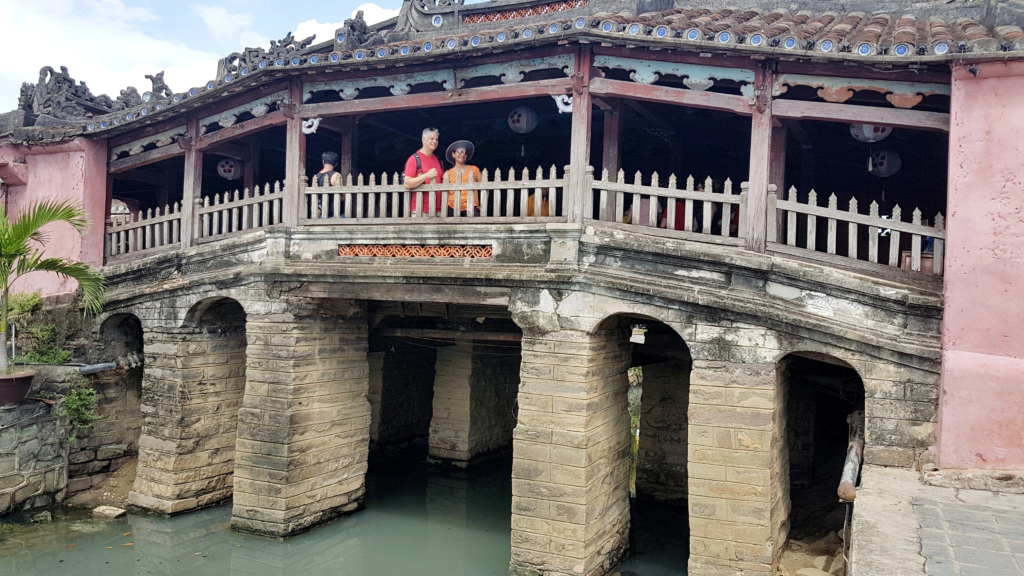
The pagoda is separated from the Bridge by a layer of wooden walls and a set of upper and lower panels, typical of ancient Vietnamese house architecture. All of the building’s frame systems are made of wood. And there are three roof systems corresponding to the three bridge parts.
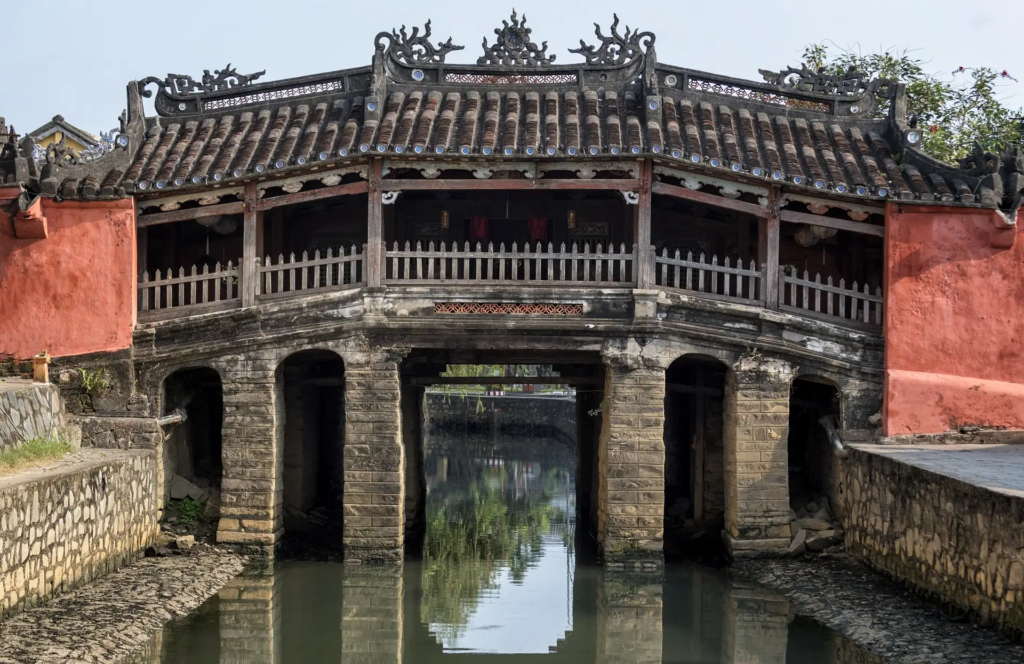
The pagoda’s roof is a yin-yang tile roof with a unique arc roof. On both sides are narrow corridors for relaxation. The roof has many decorative details on the ridge and flowing banks, especially the blue-glazed ceramic plates inlaid on the roof. Covered Bridge also preserves many stone steles recording the history of the project and Hoi An ancient town.
Travel Hoi An – Hotels Near Bridge Pagoda
To choose a place to stay near the center of Hoi An ancient town, you may have a headache because around this area, there are many beautiful Hoi An hotels and Hoi An homestays. Find some suggestions from yourvietnam.org to have a good preparation of travel Hoi An.

Volar de Faifo Villa
- Address: 132, Ngo Quyen Street, Minh An Ward, Hoi An City, Quang Nam Province
- Reference price: from 622,000 VND/night
Laluna Hoi An Riverside Hotel & Spa
- Address: 12, Nguyen Du Street, Minh An Ward, Hoi An City, Quang Nam Province
- Reference price: from 731,000 VND/night
River Suites Hoi An Hotel
- Address: 4, Nguyen Du Street, Minh An Ward, Hoi An City, Quang Nam Province
- Reference price: from 655,000 VND/night
The View Homestay Hoi An

- Address: June 28, Tran Hung Dao Street, Son Phong Ward, Hoi An City, Quang Nam Province
- Reference price: from 510,000 VND/night
Silkotel Hoi An
- Address: 14, Hung Vuong Street, Cam Pho Ward, Hoi An City, Quang Nam Province
- Reference price: from 751,000 VND/night
==> Read more: Travel Hoi An A-Z: 19 Luxury Resorts for All Your Resort Needs
Travel Hoi An – Restaurants and Eateries Near Covered Bridge

Hoi An is not only charming and “memorable” with its peaceful ancient houses but also a unique world of Hoi An cuisine. After a tour around the old town, it’s time to enjoy Hoi An-Quang Nam’s specialties. Take a look at some of the famous dining addresses here.;
- Van Loc Restaurant: 27 Tran Phu Street, Minh An Ward, Hoi An City, Quang Nam Province
- Ngoc Tuyet Restaurant: 43-45 Tran Hung Dao Street, Minh An Ward, Hoi An City, Quang Nam Province
- Hong Phuc II Restaurant: 43-45 Tran Hung Dao Street, Minh An Ward, Hoi An City, Quang Nam Province
- Vinh Hung Restaurant: 1 Chau Thuong Van Street, Minh An Ward, Hoi An City, Quang Nam Province
- Old Faifo Restaurant: 66 Nguyen Thai Hoc Street, Minh An Ward, Hoi An City, Quang Nam Province

Travel Hoi An – Tourist Destinations Near the Covered Bridge
According to #teamyourvietnam.org’s travel Hoi An experience, to save time and money, you can refer to a few places around there, combining a few other exciting activities to continue your sightseeing journey. Cau Pagoda mandarin.
From the Cau Pagoda location, you can continue to visit the entire ancient urban area, a famous trading port in the 16th – 17th centuries, to feel the unique atmosphere here. Old houses, large and small temples, shrines, ancient tombs, etc., have created a picture of Hoi An tinged with time. In particular, remember to stop by Tan Ky’s old house and Phung Hung’s ancient house.
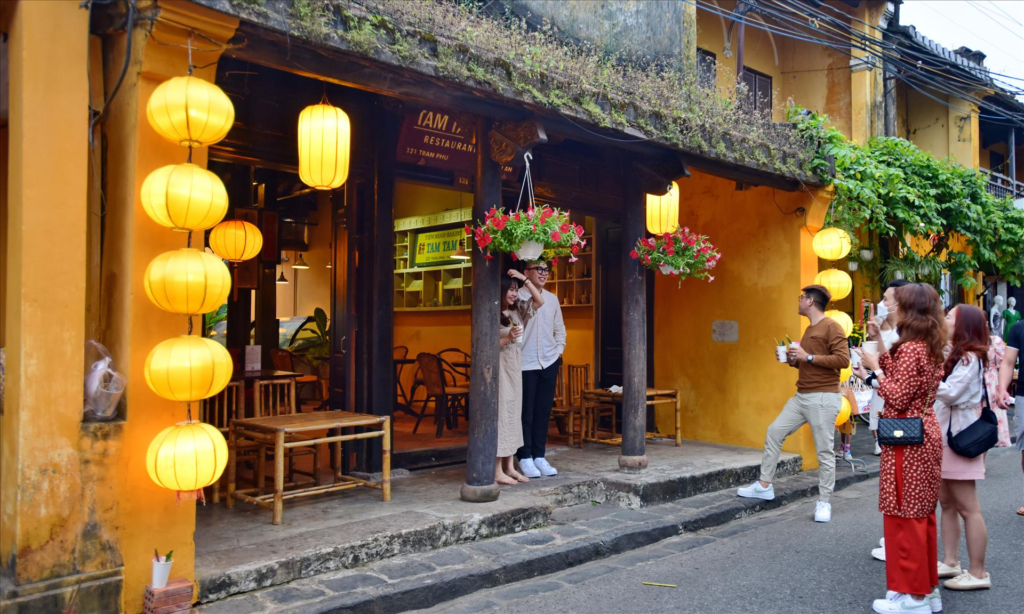
In addition, exploring a magical Hoi An with boating activities and releasing flower lanterns on the Hoai River are also romantic, unique experiences in Hoi An.
And there are many exciting things in Hoi An waiting for you to discover. Just take a look at a few self-sufficient Hoi An travel experiences and you will clearly understand the places to eat, drink, and have fun and create your own attractive itinerary.
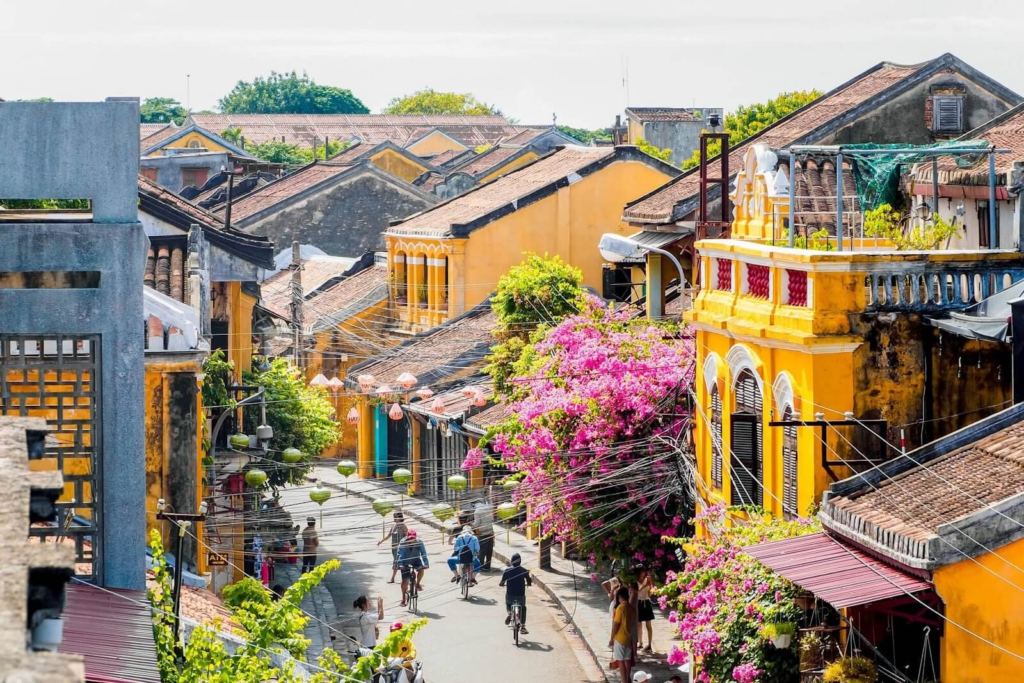
Over hundreds of years, Hoi An commercial port once flourished, then declined. And now is revived in a new look: Cultural Heritage of humanity. And in the dusty whole of that time, Covered Bridge still exists majestically like the heart that warms the whole ancient town of Hoi An.
Follow yourvietnam.org fanpage to know more about the beauty of Vietnamese culture. And also find some perfect tips to make your travel plan more wonderful.

==> Explore Cu Lao Cham Island – Vietnam’s Hidden Paradise




